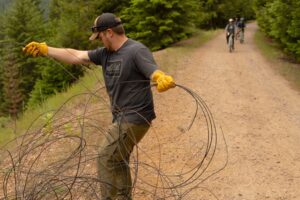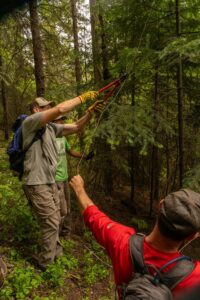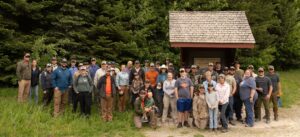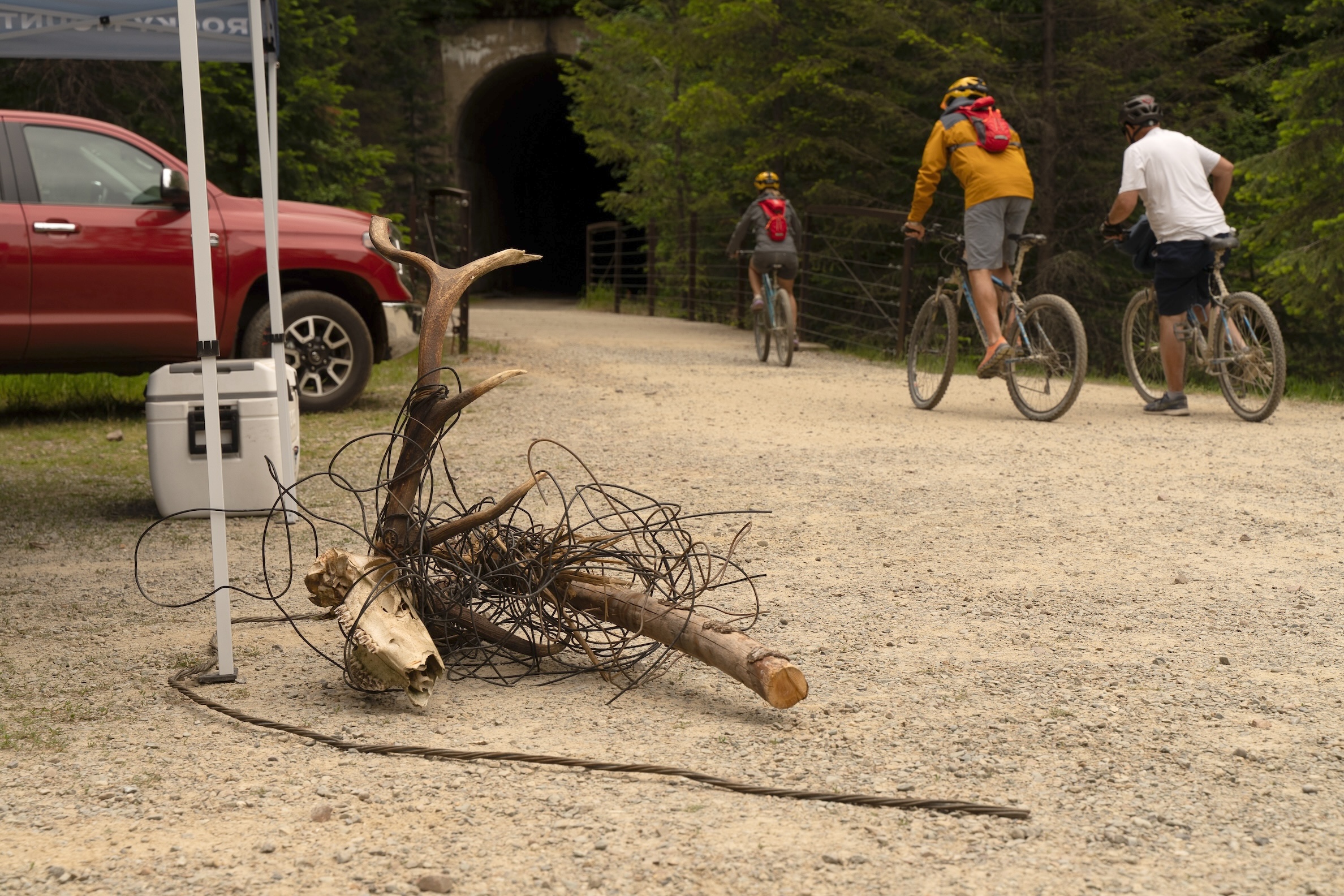By Paul Queneau, Bugle Conservation & Wildlife Editor
Dozens of Rocky Mountain Elk Foundation volunteers from across the nation gathered in the high mountains of northern Idaho once again this year on June 26th and 27th to remove another section of elk-killing wire above a historic railroad-turned-bicycling destination.

The Route of the Hiawatha scenic bike trail starts in Montana then immediately crosses into Idaho as it passes through the 1.6-mile St. Paul Pass Tunnel. From there it continues more than a dozen miles along the crest of the Bitterroot Mountains, crossing eight more tunnels and seven soaring trestles following the historic path of the Milwaukee Railroad. This section was once part of the longest continuous electrified rail line in the world running 440 miles between Harlowton, Montana, and Avery, Idaho.
After the line ceased operation in 1980, crews removed the rails but left countless miles of communication wires strung on the heavily timbered mountainsides above. More than half a century later, the rotting wooden poles holding up eights stands of quarter-inch wires have fallen one by one, leaving a rats-nest strewn across the landscape.
In 2017, two RMEF members exploring the dense forests here uncovered a wildlife graveyard. Larry Bottemiller and Curt Nizzoli were searching for historic cabins in the forest above the bike path when they came across the skull of a bull elk wrapped up in wire.
Nizzoli wrote a letter asking RMEF for help, which led 40 volunteers to gather on the Hiawatha during the summer of 2021 in partnership with the U.S. Forest Service, which manages this land. By day’s end they’d coiled more than a quarter mile of wire from the forest above the Hiawatha. In 2022, it expanded into a two-day event that attracted twice as many volunteers who succeeded in removing more than mile of wire. While they were at it, this hardworking crew found yet another bull elk skeleton tangled to death in the forest.

In 2023, Volunteers removed another mile of wire, and this June came together again to continue the work. RMEF Wildlife and Conservation Editor Paul Queneau came over from Missoula with his 18-year-old son Jackson to help, the second time they’ve lent a hand. Jackson is a railroad history buff, and getting to hold a relic of this legendary line in his hands while also helping wildlife has made this work a highlight of his summer. They joined volunteers who had traveled more than 1,500 miles to help, including another father-son duo from Ohio.
“The first part of the day our group struck out on what turned out to be a section where apparently the railroad had removed the wire for whatever reason,” Paul said. “It is incredibly hard work just climbing up those steep mountain faces, then trying to locate the wire can quite literally be like finding a needle in a haystack. But once you do and get it cut, coiled and hauled down out of the forest, it’s incredibly satisfying, especially knowing that elk and other critters will be spared a terrible demise thanks to the effort.”
It may take a decade or more to free the Hiawatha of this hidden menace to wildlife, but RMEF volunteers remain highly motivated. Each year they put the wire-wrapped collection of skulls on display for cyclists rolling by on Hiawatha trail to show why they work so hard. And inevitably a few of those passersby return the following summer to lend a hand, too.

(Photo credit: Rocky Mountain Elk Foundation)
